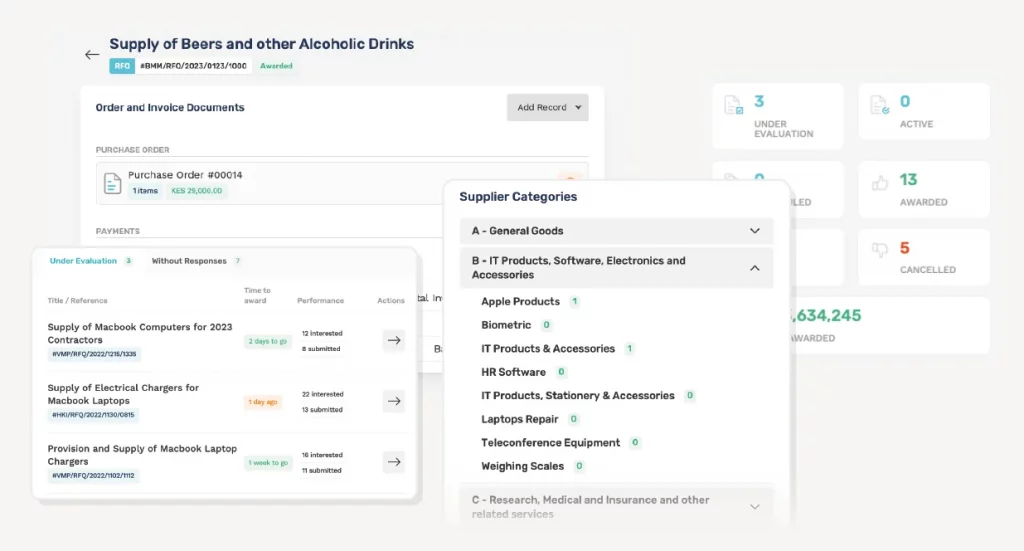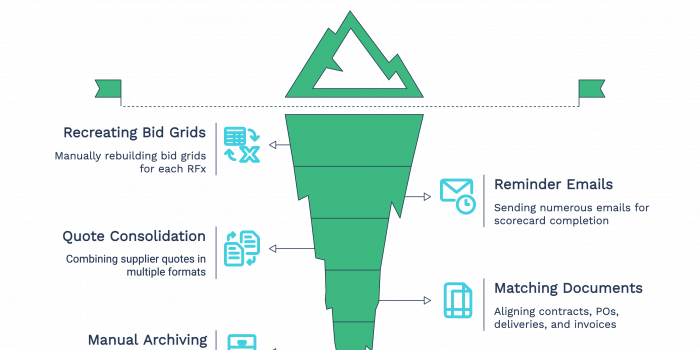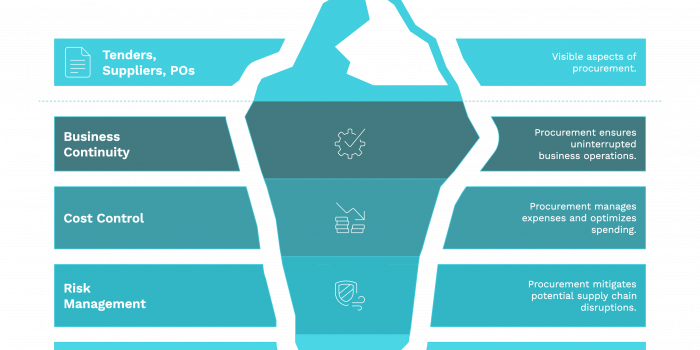Navigating Digital Procurement: 14 FAQs to Get You Started
Working on digital transformation in your organization? Here are some important FAQs on Digital Procurement to get you started…

As businesses increasingly move their operations online, digital procurement has become a crucial part of managing supply chains efficiently and effectively. However, with so many options available, it can be challenging to know where to begin hence today’s FAQs on digital procurement.
In this article, we provide you with a better understanding of the benefits, challenges, and best practices by answering 14 FAQs on digital procurement. By the end of this article, you’ll be ready to take your procurement processes to the next level.
- What is digital procurement and how can it benefit my organization?
Digital procurement is the use of technology and digital tools to manage, automate and streamline the procurement process, from sourcing and supplier management to purchasing and payment. By using digital procurement solutions like Scale, you can increase efficiency, reduce costs, and improve supplier relationships. - What are some common procurement process inefficiencies that digital procurement can address?
Common procurement process inefficiencies that digital procurement can address include manual data entry, inefficient workflows, and a lack of visibility into procurement processes. Scale can help you address these inefficiencies by automating and streamlining key procurement processes. - What are the key features of a digital procurement system?
Overall, a digital procurement system like Scale provides a comprehensive suite of tools to manage the entire procurement process. Key features of such a system includes e-sourcing, contract management, supplier management, purchase order creation, invoice processing, and analytics and reporting. By using a digital procurement system like Scale, organizations can increase efficiency, reduce costs, and improve supplier relationships. - What are some examples of the tools I can implement in my organization?
Examples of digital procurement tools include e-procurement software, supplier management software, contract management software, e-invoicing software, and digital marketplaces. - How can digital procurement improve overall supply chain management?
Digital procurement can improve supply chain management by providing real-time visibility into supplier performance, improving communication and collaboration with suppliers, and enabling better decision-making based on data and analytics. - How exactly does this assist in selecting the best suppliers for my organization?
Digital procurement provides tools for supplier onboarding, performance tracking, risk assessment, communication, and collaboration. It leads to improved supplier relationships and enhanced supplier performance through supplier selection, evaluation, and development. Using Scale, you can use data-driven insights to identify the best suppliers for your organization, taking into account factors like cost, quality, and reliability. You can also track supplier performance in real-time, using metrics like delivery times, product quality, and customer service ratings. - What are the challenges of implementing digital procurement?
The challenges of implementing digital procurement include selecting the right tools, upskilling your team, and continuously evaluating your processes, resistance to change, integration with existing systems, data security and privacy concerns, and the need for specialized skills and knowledge. Scale addresses these challenges by providing a user-friendly platform that’s easy to implement and integrate with your existing systems. - How can digital procurement help me reduce costs without sacrificing quality?
Digitizing procurement helps in reducing costs by improving efficiency and automating processes, reducing administrative overhead, and enabling better negotiation and management of supplier contracts and relationships. For example, Scale’s cost optimization features help you reduce procurement costs by identifying cost-saving opportunities, negotiating better pricing with suppliers, and tracking price variations in real-time. - What are some of the the best practices in digital procurement?
Best practices for digital procurement include defining clear procurement processes, establishing data standards and governance, selecting the right tools and platforms, and investing in training and development for procurement staff. More importantly, the technology implemented should keeps the IT team in control, but it should allow procurement teams more flexibility and access than many legacy systems. - How can I choose the right digital procurement system for my organization?
To choose the right digital procurement system for your organization, you should consider your procurement needs and goals, evaluate different solutions based on features and cost, and seek input from procurement staff and other stakeholders. - How can digital procurement help with compliance and risk management?
Digital procurement can help with compliance and risk management by providing visibility into the entire procurement process, including supplier selection, contract management, and providing oversight on payments. Further, it also enables organizations to set up automated alerts and notifications for compliance and risk management issues. - What are some key success factors for implementing digital procurement?
Key success factors for implementing digital procurement include having a clear understanding of procurement objectives, ensuring strong leadership and buy-in from stakeholders, selecting the right digital procurement tools, properly training and upskilling procurement teams, and continuously evaluating and improving the procurement process. - How can digital procurement help with supplier diversity and inclusion?
Digital procurement can help with supplier diversity and inclusion by providing tools for tracking and evaluating supplier diversity metrics, setting supplier diversity goals, and identifying diverse suppliers through digital marketplaces and supplier databases. It can also help to remove biases in the procurement process and increase transparency in supplier selection. - What are the trends in digital procurement?
Some of the current top trends in digital procurement include the use of artificial intelligence and machine learning, the adoption of blockchain technology for supply chain transparency and security, and the increasing use of mobile and cloud-based solutions. (Here is an interesting report on this from Deloitte on The AI opportunity in sourcing and procurement)
As we’ve seen from these FAQs on Digital Procurement, implementing digital technology in procurement can offer a wide range of benefits to organizations of all sizes. However, achieving this isn’t without its challenges, from selecting the right tools to upskilling your team and continuously evaluating your processes.
Digitize your Procurement Processes with Scale
If you’re looking to take your procurement processes to the next level, we encourage you to check out our digital procurement solution, Scale. Our platform leverages the latest technology to automate and streamline procurement processes, from supplier sourcing and selection to contract management and tracking payments.
Reach out to us today to learn more about how Scale can help you transform your procurement processes and drive success for your organization.









